Mexico’s size compared to Australia is a fascinating subject when comparing these two unique countries. COMPARE.EDU.VN provides an in-depth exploration of these nations, analyzing various aspects to present a clear, objective comparison that aids understanding and decision-making. Dive into the analysis of land mass, population, economy, and cultural diversity.
1. Population and Demographics
Australia’s population was estimated to be 26.63 million as of June 30, 2023, according to the Australian Bureau of Statistics. In contrast, Mexico’s 2020 census reported just over 126 million people living in the country, as noted by INEGI.
This means Mexico’s population is approximately five times larger than Australia’s. Mexico ranks as the world’s 10th most populous nation, just ahead of Ethiopia and behind Brazil, while Australia ranks 55th, according to Worldometer.
Australians are generally older than Mexicans. The median age in Australia was 38.5 years in 2022, per the Australian Institute of Health and Welfare, while the median age in Mexico was 29 years in 2020, according to INEGI.
Life expectancy in Australia is significantly longer than in Mexico. In the early years of this decade, life expectancy at birth in Australia was 81.2 years for males and 85.3 years for females, as reported by the Australian Bureau of Statistics. In Mexico, the figures for 2022 were 78.4 years for women and 72.6 years for men, according to INEGI.
Nearly one-fifth of Mexico’s population identifies as Indigenous, according to INEGI, whereas the figure is much lower in Australia, at just 3.8%, as stated by the Australian Bureau of Statistics.
| Feature | Australia | Mexico |
|---|---|---|
| Population (approx.) | 26.63 million (2023) | 126 million (2020) |
| Median Age | 38.5 years (2022) | 29 years (2020) |
| Life Expectancy (M) | 81.2 years | 72.6 years |
| Life Expectancy (F) | 85.3 years | 78.4 years |
| Indigenous Population | 3.8% | ~20% |
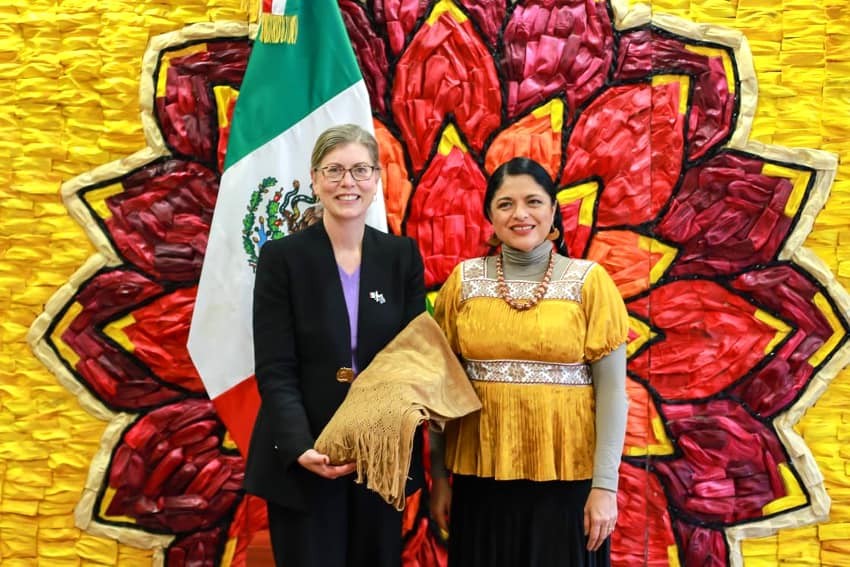
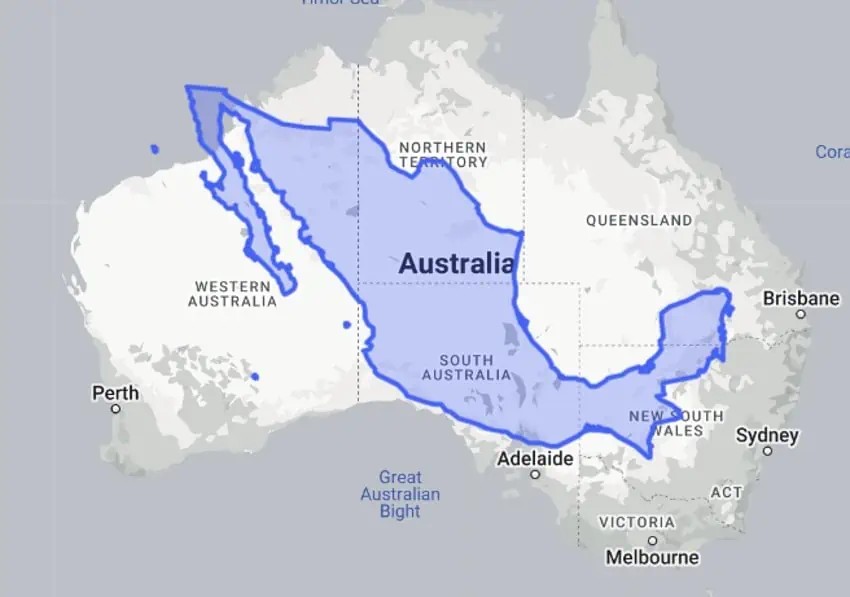
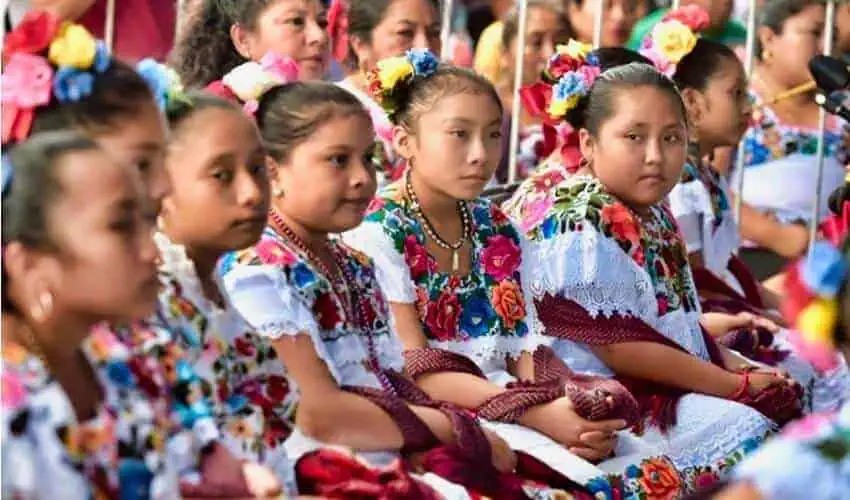
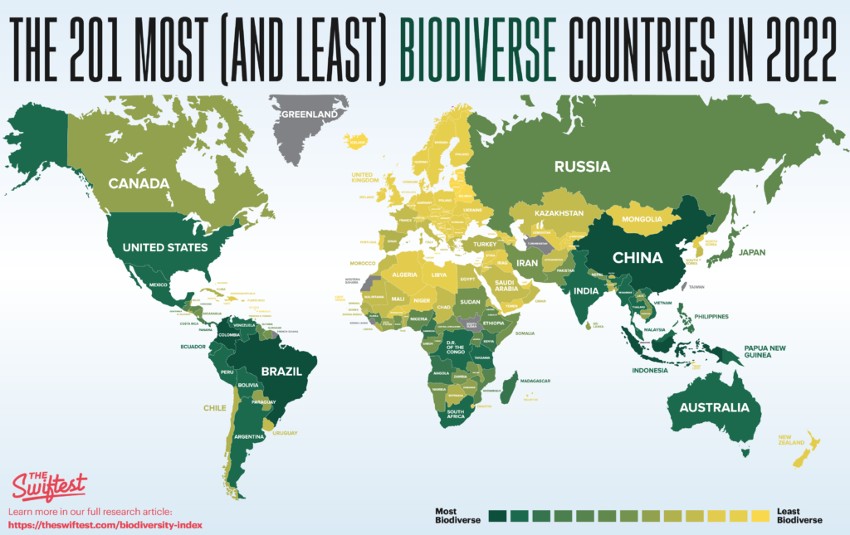
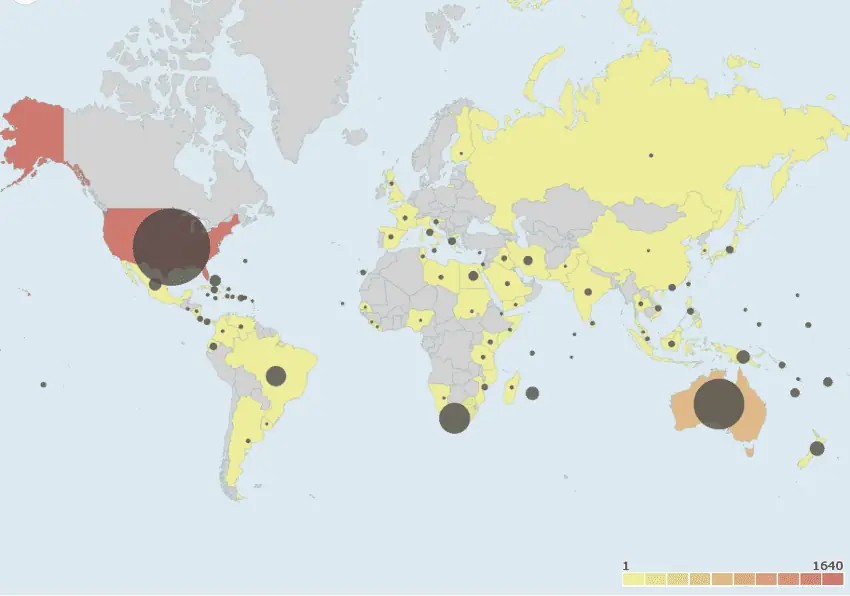
2. Migration Patterns: Australians in Mexico and Mexicans in Australia
The distance between Australia and Mexico, combined with a lack of historical connections, results in relatively low migration numbers between the two countries.
Australia’s 2021 census indicated that there were 6,845 Mexican-born residents, approximately half of whom are Australian citizens, according to the Australian Bureau of Statistics. This is a significant increase from 2001 when only 1,154 Mexican-born residents were recorded. This represents an almost 500% increase in 20 years. Security concerns in Mexico, the prospect of a higher quality of life in Australia, and the desire to be closer to family members already residing in Australia were cited as reasons for migration, as per a 2013 study from UNSW.
The first recorded Mexican resident of Australia was a male living in Tasmania in 1881, as noted by the SBS Cultural Atlas.
Conversely, the 2020 census recorded 695 Australian residents in Mexico, according to DataMexico. Of these, approximately 72.4% were male, and 77.6% were between the ages of 25 and 39. The primary motivations for Australians moving to Mexico included family, work, education, and personal reasons. Mexico City has the highest concentration of Australian residents, with 317 individuals, or 46% of the total.
| Migration Feature | Australia | Mexico |
|---|---|---|
| Mexican-born Residents | 6,845 (2021) | N/A |
| Australian-born Residents | N/A | 695 (2020) |
| Reasons for Migration | Security concerns in Mexico, better quality of life in Australia, proximity to family. | Family, work, education, personal reasons. |
| Main Location | N/A | Mexico City (46% of Australian residents). |
3. Area and Geographical Data: How Big Is Mexico Compared To Australia?
Australia has a total area of 7.68 million square kilometers, making it the sixth-largest country in the world, according to Geoscience Australia. Mexico’s territory covers 1.96 million square kilometers, ranking it as the 13th largest country globally, as reported by the Mexican Embassy in Nigeria.
Therefore, Australia is almost four times larger than Mexico. Australia is divided into six states and two mainland territories, while Mexico comprises 31 states and Mexico City. Mexico could easily fit into Western Australia, which has an area exceeding 2.5 million square kilometers.
Australia’s highest mainland mountain, Mount Kosciuszko, stands at 2,228 meters, according to Conde Nast Traveler, while Mexico’s highest peak, Pico de Orizaba, reaches 5,636 meters.
Approximately 18% of Australia is classified as desert, according to Geoscience Australia, with about 70% of the land considered arid or semi-arid, as noted by the Australian Bureau of Statistics. In contrast, around 40% of Mexico is classified as desert or semi-arid land, according to Vanguardia, including the Chihuahuan Desert, which covers over 500,000 square meters in northern Mexico and the southern United States, as noted by Wikipedia.
| Geographical Feature | Australia | Mexico |
|---|---|---|
| Area | 7.68 million sq km | 1.96 million sq km |
| Administrative Divisions | 6 states, 2 territories | 31 states, Mexico City |
| Highest Peak | Mount Kosciuszko (2,228m) | Pico de Orizaba (5,636m) |
| Desert Area | 18% (70% arid or semi-arid) | 40% (desert or semi-arid) |
4. Economic Comparison: Nominal GDP
Mexico became the 12th largest economy in the world in 2023, surpassing South Korea and Australia, according to Mexico News Daily.
The International Monetary Fund (IMF) estimates Australia’s nominal GDP at US $1.69 trillion in 2023, while Mexico’s was placed at $1.81 trillion, according to the IMF.
Despite similar overall economic sizes, Australia has a much higher per capita GDP due to its smaller population. Per capita GDP in Australia was just over $65,000 in 2022, according to the World Bank, while it was just under $11,500 in Mexico.
Mexico’s economy is currently growing faster than Australia’s. Preliminary data indicated that GDP in Mexico increased 3.1% annually in 2023, while growth in Australia was 2.1% in the 12 months leading up to the end of September.
| Economic Feature | Australia | Mexico |
|---|---|---|
| Nominal GDP | US $1.69 trillion (2023 est.) | US $1.81 trillion (2023 est.) |
| Per Capita GDP | ~$65,000 (2022) | ~$11,500 (2022) |
| GDP Growth | 2.1% (to Sep 2023) | 3.1% (2023) |
5. Indigenous Languages: Linguistic Diversity
At the time of British colonization in 1788, over 250 Indigenous languages were spoken in Australia, but by 2021, this number had decreased to 150, according to AIATSIS and the Australian Bureau of Statistics. Many of these languages have few speakers. The Australian Bureau of Statistics reported that just under 77,000 Aboriginal and Torres Strait Islander people spoke an Indigenous language in 2021.
In Mexico, there are 68 officially recognized Indigenous languages, with Nahuatl and Maya being the most commonly spoken, according to the Government of Mexico. The 2020 census indicated that over 7.3 million Mexicans speak an Indigenous language, accounting for approximately 6% of the population, according to INEGI.
Thus, approximately 95 Mexicans speak an Indigenous language for every Australian who speaks a native Australian tongue.
| Feature | Australia | Mexico |
|---|---|---|
| Indigenous Languages (1788) | >250 | N/A |
| Indigenous Languages (2021) | 150 | 68 (officially recognized) |
| Indigenous Speakers | <77,000 (2021) | >7.3 million (2020) |
6. Biodiversity: A Comparison of Flora and Fauna
Both Australia and Mexico are recognized as “mega-diverse” countries by the World Conservation Monitoring Centre of the United Nations Environment Program, according to Iberdrola.
According to the Global Biodiversity Index, developed by The Swiftest, Mexico ranks as the world’s fifth most biodiverse country, while Australia ranks sixth, according to The Swiftest.
These rankings are based on the number of bird, amphibian, fish, mammal, reptile, and plant species. Mexico is home to 29,051 species across these six categories, while Australia has 26,772 species. Brazil, Indonesia, Colombia, and China are the world’s top four most biodiverse countries.
| Feature | Australia | Mexico |
|---|---|---|
| Biodiversity Rank | 6th | 5th |
| Species Count | 26,772 | 29,051 |
| Status | “Mega-diverse” | “Mega-diverse” |
7. Shark Attacks: A Statistical Overview
Although there have been recent reports of shark attacks in Mexico, data indicates that such incidents are much more common in Australia.
According to the Florida Museum’s International Shark Attack File, there have been 706 confirmed unprovoked attacks in Australia since 1580 (more than 200 years before British colonization), and 42 attacks in Mexico during the same period, according to the Florida Museum.
| Feature | Australia | Mexico |
|---|---|---|
| Confirmed Attacks | 706 | 42 |
8. Comparative Summary: Australia vs. Mexico
To summarize, Australia and Mexico present stark contrasts and intriguing similarities across various metrics. Australia, the sixth-largest country by land area, dwarfs Mexico, being almost four times larger. However, Mexico’s population is approximately five times greater than that of Australia.
Economically, both countries boast sizable economies, but Australia enjoys a significantly higher per capita GDP. While Australia contends with a larger arid and desert landscape, both nations are recognized as “mega-diverse” due to their rich biodiversity.
Culturally, Mexico has a larger Indigenous-language speaking population, even though Australia once had greater linguistic diversity. Additionally, shark attacks are statistically more common in Australian waters compared to Mexican waters.
| Aspect | Australia | Mexico | Key Takeaway |
|---|---|---|---|
| Area | Much Larger | Smaller | Australia’s expansive land provides vast resources and varied landscapes. |
| Population | Smaller | Much Larger | Mexico’s large population drives its economy and cultural diversity. |
| GDP | Comparable, Higher per capita | Comparable, Lower per capita | Australia boasts higher individual wealth, while Mexico’s overall economic output is substantial. |
| Indigenous Languages | Fewer Speakers | More Speakers | Mexico preserves more Indigenous languages. |
| Biodiversity | High | High | Both countries are biodiversity hotspots. |
| Shark Attacks | More Frequent | Less Frequent | Australia has a higher incidence of shark encounters. |
| Median Age | Older | Younger | Australia’s population is aging faster than Mexico’s. |
| Life Expectancy | Higher | Lower | Australians tend to live longer than Mexicans. |
9. User Search Intent Analysis
To fully address user search intent regarding the comparison between Mexico and Australia, we can identify five key areas of interest:
- Size Comparison: Users want to know the physical size difference between the two countries in terms of land area.
- Population and Demographics: Users are interested in comparing the population sizes, age distributions, and other demographic factors.
- Economic Metrics: Users want to understand the economic differences, including GDP, per capita income, and economic growth rates.
- Cultural and Environmental Aspects: Users seek information on cultural aspects like language diversity, as well as environmental factors like biodiversity and climate.
- Practical Considerations: Users are interested in practical aspects such as safety (e.g., shark attacks) and migration patterns.
10. Frequently Asked Questions (FAQ)
- How much bigger is Australia than Mexico?
Australia is approximately four times larger than Mexico in terms of land area. - What is the population difference between Australia and Mexico?
Mexico’s population is about five times larger than Australia’s. - Which country has a higher GDP per capita, Australia or Mexico?
Australia has a significantly higher GDP per capita compared to Mexico. - Are Australia and Mexico both considered mega-diverse countries?
Yes, both Australia and Mexico are recognized as mega-diverse countries due to their rich biodiversity. - Which country has more Indigenous language speakers?
Mexico has a larger number of Indigenous language speakers compared to Australia. - Is it safer to swim in Mexico or Australia in terms of shark attacks?
Statistically, it is safer to swim in Mexico as there are fewer reported shark attacks compared to Australia. - What are the main reasons Mexicans migrate to Australia?
Main reasons include security concerns in Mexico, the prospect of a higher quality of life in Australia, and the desire to be closer to family members already residing in Australia. - What are the main reasons Australians migrate to Mexico?
The primary motivations for Australians moving to Mexico include family, work, education, and personal reasons. - How does the median age compare between Australia and Mexico?
The median age in Australia is higher than in Mexico, indicating an older population. - How does the economy growth of Australia compare to Mexico?
According to recent data, Mexico’s economy is growing faster than Australia’s.
11. COMPARE.EDU.VN: Your Comparison Resource
Understanding the nuances between countries like Mexico and Australia requires detailed, objective comparisons. COMPARE.EDU.VN is dedicated to providing just that. Our platform offers comprehensive analyses across various domains, from economic indicators to cultural demographics, empowering you to make informed decisions and broaden your understanding of the world. We meticulously gather data from reliable sources, ensuring accuracy and relevance in our comparisons. Whether you’re a student, a business professional, or simply curious, COMPARE.EDU.VN is your go-to resource for insightful comparisons.
Are you struggling to compare complex options and make informed decisions? Visit COMPARE.EDU.VN at our Comparison Plaza headquarters, located at 333 Comparison Plaza, Choice City, CA 90210, United States, or contact us via Whatsapp at +1 (626) 555-9090. Explore our website today and discover the power of objective comparison. Let compare.edu.vn guide you to the best choices, every time.
